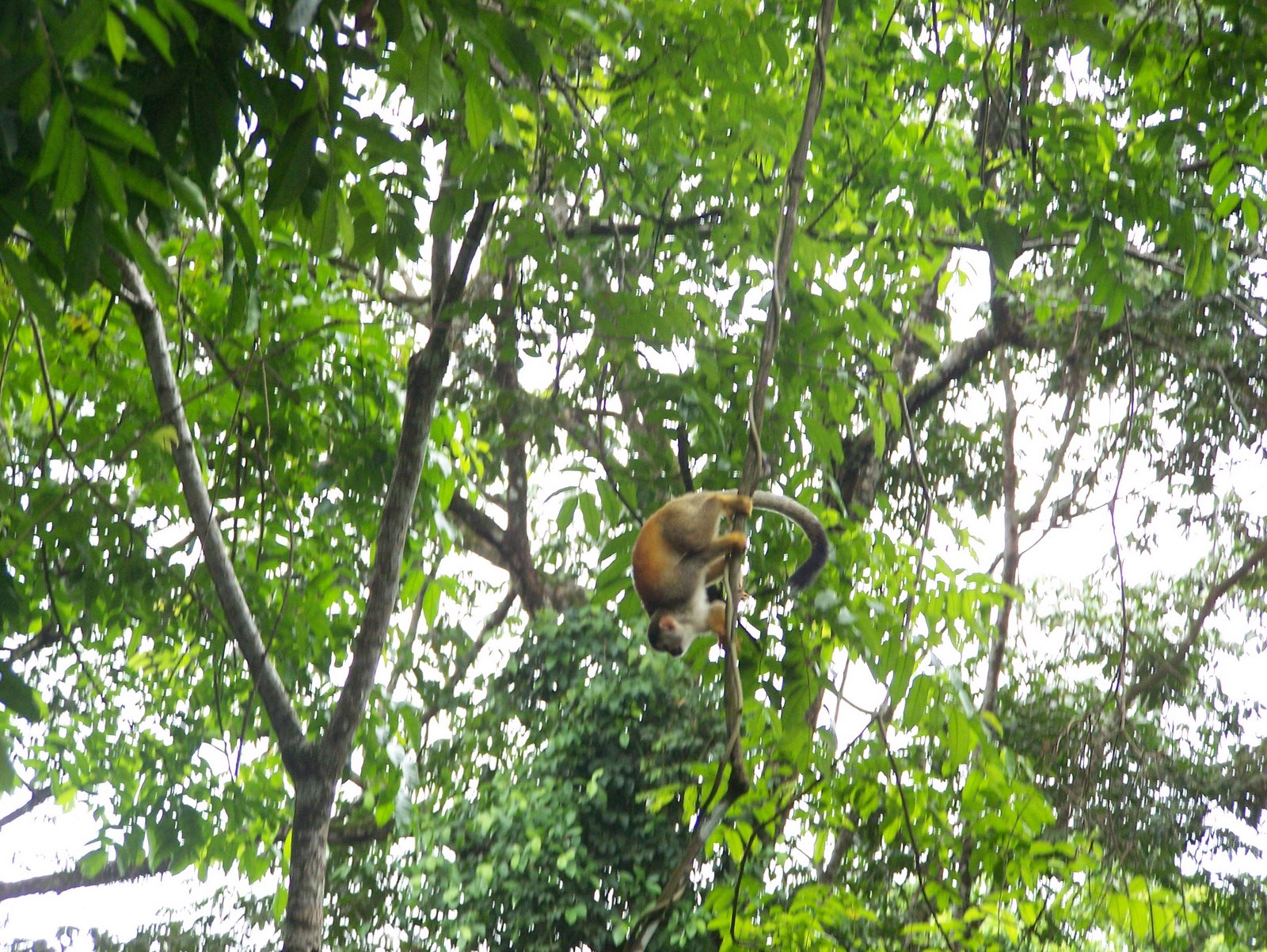Costa Rica’s Central Pacific region, and particularly the area around Manuel Antonio National Park, has been undergoing an intense process of economic development and land use change (e.g. monoculture and unplanned urban expansion) over the last fifteen years. A disturbing result of these changes is the very serious environmental degradation of the region and of Manuel Antonio National Park. The most alarming indicator of the ecological future of the region is the situation faced by the mono tití, an indicator of environmental degradation of Costa Rica’s Central Pacific Region. Other primates found within the range of this threatened subspecies include the white-throated capuchin (Cebus capucinus), mantled howler (Alouatta palliata) and Central American spider monkey (Ateles g. geoffroyi).
Conservation of the fauna populations should be considered a priority and their natural dispersal should be augmented and monitored closely. In order to augment dispersal, efforts must focus on developing natural forest corridors through or around oil palm plantations and forest gaps.
In 2001 by the Titi Conservation Alliance created Naranjo River Biological Corridor has been conceived to create natural migration of isolated squirrel monkey troops and other tropical forest wildlife species between Manuel Antonio National Park, Nara Hills Protected Zone and Los Santos Forest Reserve. So far, the project has increased forest cover in approximately 35% through areas of massive plantation and degraded habitats, helping to connect and augment fragmented populations to ultimately ensure the long-term genetic health of the species.
In addition to helping the threatened squirrel monkeys, the biological corridor provides habitat for other tropical forest wildlife species along Costa Rica’s Pacific coast, and protects three vital watersheds, safe havens for biodiversity.
Manuel Antonio National Park
Manuel Antonio National Park, in Spanish the Parque Nacional Manuel Antonio, is a small National Park in the Central Pacific Conservation Area located on the Pacific coast of Costa Rica, just south of the city of Quepos, Puntarenas, and 132 km (82 mi) from the national capital of San José. Established in 1972 with a land area enumerating 1,983 hectares (the smallest of any Costa Rican national park), it is the destination of as many as 150,000 visitors annually and well known for its beautiful beaches and hiking trails. In 2011, Manuel Antonio was listed by Forbes among the world’s 12 most beautiful national parks.
Although Manuel Antonio National Park is Costa Rica’s smallest national park, the diversity of wildlife in its 6.83 km2 (3 sq mi) is unequaled with 109 species of mammals and 184 species of birds. Both brown-throated three-toed sloth and Hoffmann’s two-toed sloth are a major feature, as are three of Costa Rica’s four monkey species — the mantled howler monkey, Central American squirrel monkey (mono tití), and white-headed capuchin monkey. Black spiny-tailed iguana, green iguana, common basilisk, white-nosed coati and many snake and bat species are also common in the park. Included in the 184 bird species are toucans, woodpeckers, potoos, motmots, tanagers, turkey vulture, parakeets and hawks. Dolphins can be observed there, as well as the occasional migrating whale. Scuba diving, snorkeling, sea kayaking, mountain biking, and hiking provide opportunities to experience the tropical wildlife that enriches Manuel Antonio.
- Three-Toed Sloth
- Male Ctenosaur/Black Iguana
- Raccoon Eating Crab at Park Beach
- Manuel Antonio National Park
- Manuel Antonio National Park
- Manuel Antonio National Park
- Ghost Crab
- Squirrel Monkey (Mono Tití)
- Squirrel Monkey (Mono Tití)
- Howler Monkey
- Hoffman’s Two-Toed Sloth
- Manuel Antonio National Park










